Forex trading
Trade 330+ forex pairs with leverage on our award-winning spread bet and CFD platform. Enjoy tight spreads, lightning-fast execution and the highest-rated customer service in the industry.*
FCA regulated
Segregated funds
LSE listed
Search instruments:
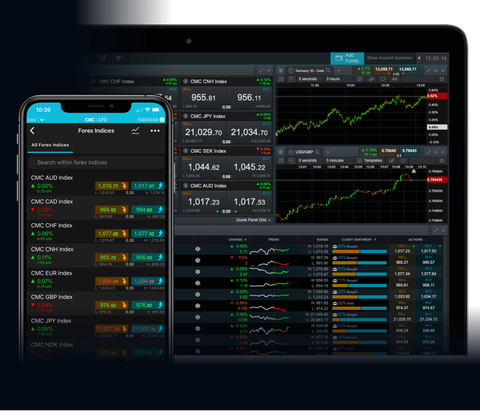
More than a forex trading platform
We've got your pair
More forex pairs than any other broker*. If you want it, we've probably got it.
Precision pricing
We combine 8 feeds from tier-one banks, to get you our most accurate price.
Minimal slippage
With fully automated, lightning-fast execution in 0.0045 seconds**.
99.7% fill rate^
No dealer intervention, regardless of your trading size.
UK-based client services
Award-winning service*, online 24/5, whenever you're trading.
No partial fills
Get the trade you want – we don’t reject or partially fill trades based on size.
More FX pairs than anyone else
Get exposure to over 330 currency pairs on the world’s most liquid market. Trade on favourites like GBP, USD and EUR through to less popular currencies like the Turkish lira and Norwegian krone with spreads from as low as 0.7 pips.
Other popular pairs
Pricing is indicative. Past performance is not a reliable indicator of future results.
See our competitive forex costs
Whether you trade the majors, minors, movers or our forex indices, costs are important. That’s why we’re committed to being transparent with our pricing across the industry’s widest range of instruments – see the pricing for our most popular forex pairs below.
Trade on forex indices
EXCLUSIVE TO CMC
Expecting big news from the White House? Our forex indices are a collection of related, strategically-selected pairs, grouped into a single basket. Trade on our 12 baskets of FX pairs, including the CMC USD Index.

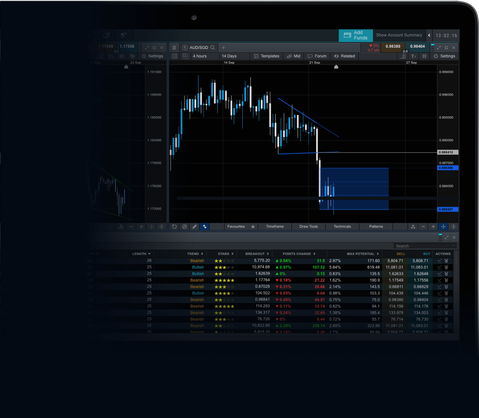
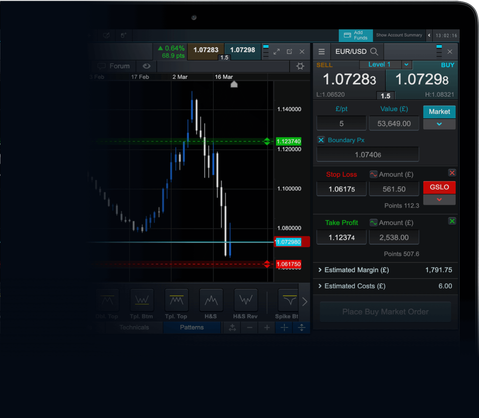
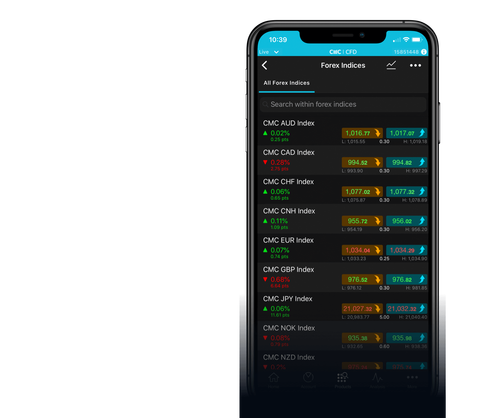
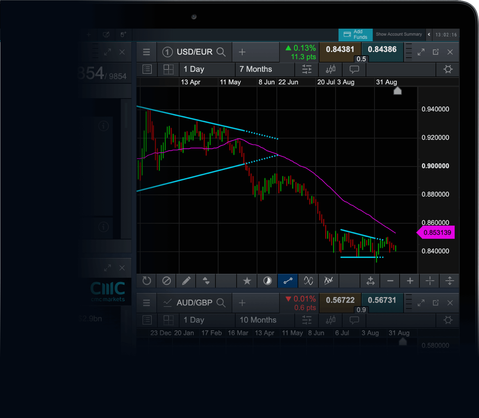
The platform built for forex trading
Fast execution, precise charting and accurate insights are vital to your success as a forex trader. Our award-winning trading platform* was built with the successful forex trader in mind.
Pattern recognition scanner
We automatically scan over 120 of our most popular instruments every 15 minutes for emerging and completed chart patterns, such as wedges, channels and head & shoulders formations.
Advanced order execution
We offer a range of advanced order types, including trailing and guaranteed stop losses, partial closure, market orders and boundary orders on every trade, so you have the flexibility to trade your way.
Award-winning app*
Industry-leading charting
No.1 Web-Based Platform
ForexBrokers.com Awards 2020
Best Forex Broker
Good Money Guide Online Trading Awards 2020
Most Transparent Forex Broker – Europe
Global Forex Awards (Retail) 2020
News
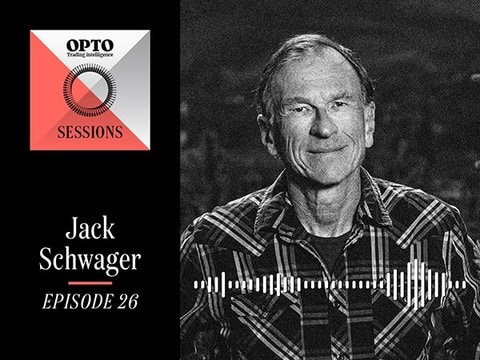
Opto Sessions: Jack Schwager’s market misconceptions
PODCAST
Jack Schwager, renowned author of the Market Wizards book series, reveals a major misconception in investing.
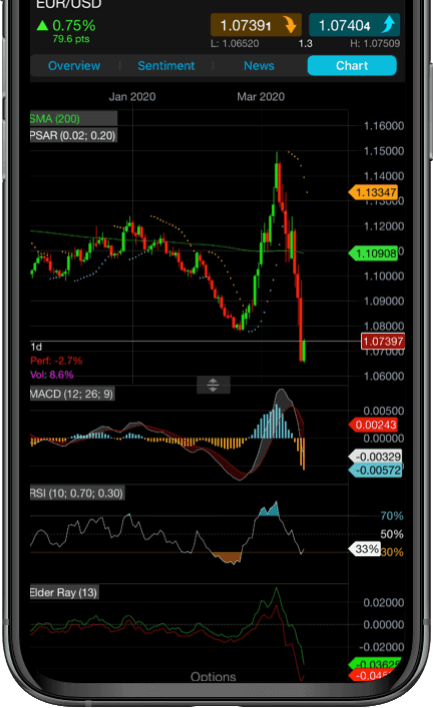
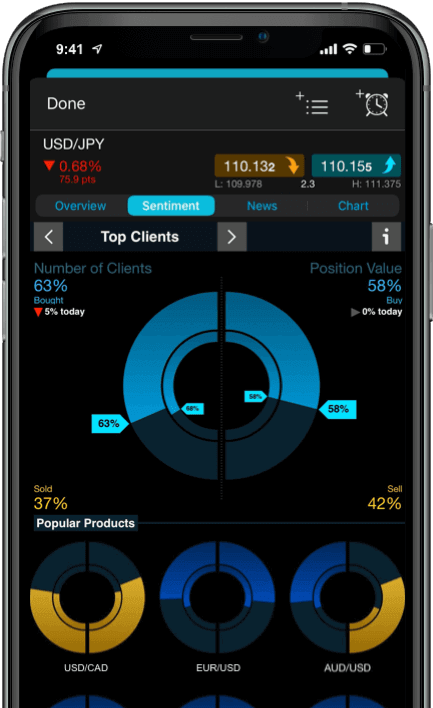
Powerful trading wherever you are
Trade like you’re on a desktop, on your mobile. Our award-winning mobile trading app allows you to seamlessly open and close trades, track your positions, set-up notifications and analyse mobile optimised charts.
FAQs
New to trading?
Is it free to open an account?
There's no cost when opening a live spread betting or CFD trading account. You can also view prices and use tools such as charts, Reuters news or Morningstar quantitative equity reports, free of charge. However, you will need to deposit funds in your account to place a trade. You can find out more about the costs of placing a trade here
What is the minimum trade size for forex?
You can spread bet from £0.30/point on EUR/USD, GBP/USD, USD/JPY and AUD/USD, and £0.40/point on EUR/GBP. You can see the minimum trade size for all instruments on the platform, in ‘Product overview’, under ‘Betting and Position Limits’.
What are the costs of spread betting?
There are a number of costs to consider when spread betting, including spread costs, holding costs (for trades held overnight which is essentially a fee for the funds you borrow to cover the leveraged portion of the trade), rollover costs and guaranteed stop-loss order charges (if you use this risk-management tool).
Is CMC Markets regulated by the FCA?
Yes, CMC Markets UK plc (registration number 173730) and CMC Spreadbet plc (registration number 170627) are fully authorised and regulated by the Financial Conduct Authority (FCA) in the UK. Retail client money is held in segregated client bank accounts and money held on behalf of clients is distributed across a range of major banks, which are regularly assessed against our risk criteria.
Is CMC Markets covered by the FSCS?
Yes, your eligible deposits with CMC Markets are protected up to a total of £85,000 by the Financial Services Compensations Scheme (FSCS), the UK's deposit guarantee scheme. If CMC Markets ever went into liquidation, retail clients would have their share of segregated money returned, minus the administrator's costs in handling and distributing these funds. Any shortfall of funds up to £85,000 may be compensated under the FSCS.
How does CMC Markets protect my money?
As a CMC client, your money is held separately from CMC Markets' own funds, so that under property, trust and insolvency law, your money is protected. Therefore your money is unavailable to general creditors of the firm, if the firm fails.
How does CMC Markets make money?
Our income primarily comes from our spreads, while other fees, such as overnight holding costs, make a minor contribution to our overall revenue.
We never aim to profit from our clients' losses. Our aim is to build long-term relationships by providing the best possible trading experience through our technology and customer service.
New to forex trading?
What is forex?
FX trading, also known as foreign exchange trading, or forex trading, is the exchange of different currencies on a decentralised global market. It's one of the largest and most liquid financial markets in the world. Forex trading involves the simultaneous buying and selling of the world's currencies on this market.
Learn more
How to trade forex?
When trading forex, you speculate on whether the price of one currency will rise or fall against another. For example, if you believe that the value of the British pound will rise, relative to the value of the US dollar, you would go ahead and trade the GBP/USD pair.
Learn more
Forex trade examples?
To help you understand how forex trading works, view our CFD examples, which takes you through both buying and selling scenarios.
See forex example
What is margin in forex?
Forex margin rates are usually expressed as a percentage, with forex margin requirements typically starting at around 3.3% in the UK for major foreign exchange currency pairs. Your FX broker’s margin requirement shows you the leverage you can use when trading forex with that broker.
Learn more
What is leveraged trading?
One of the advantages of spread betting and trading CFDs is that you only need to deposit a percentage of the full value of your position to open a trade, known as trading on leverage. Remember, trading on leverage can also amplify losses, so it’s important to manage your risk.
Why spread betting?
Spread betting allows you to trade tax-free on a wide range of financial markets 24 hours a day, from Sunday nights through to Friday nights. Trade on your phone, tablet, PC or Mac on a wide range of instruments using leverage. Tax treatment depends on individual circumstances and can change or may differ in a jurisdiction other than the UK.